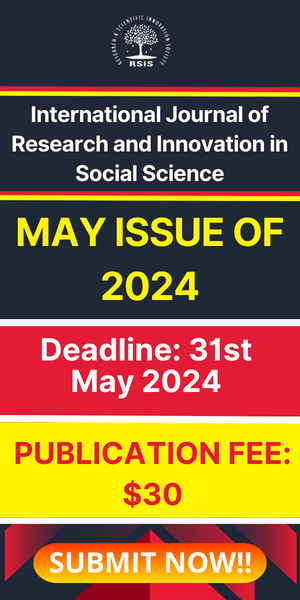- August 17, 2021
- Posted by: rsispostadmin
- Categories: IJRISS, Social Science
International Journal of Research and Innovation in Social Science (IJRISS) | Volume V, Issue VII, July 2021 | ISSN 2454–6186
Qualitative content analysis, utility, usability and processes in educational research
GN Shava, S. Hleza, F.Tlou, S. Shonhiwa, and E. Mathonsi
National University of Science and Technology, Zimbabwe
Abstract
Qualitative data analysis requires some creativity in organizing a pile of raw data and can be a daunting task for educational researchers. The whole process of analyzing data involves breaking down raw data into manageable chunks. Effective qualitative data analysis plays a critical role in educational research outcomes. Well designed qualitative data analysis and use of computer packages is a pathway to increasing credebilty and trustworthiness in qualitative research. The goal of this desk top literature review is to elaborate on the usability, utility and processes of analyzing qualitative research data. An overview of qualitative data analysis is presented. In this article it is argued that statistical quantitative data analysis does not take full account of the many interaction effects that take place in social settings thus the need to use qualitative data analysis techniques in analysing educational research data. The main purpose of this article is to clarify the features of Qualitative Content Analysis (QCA) and highlighting how it is utilised in conduting educational research.
Key words: Qualitative Research, Data Analysis, Content Analysis, Emerging Themes, Multiple coders, Trustworthiness and Credibility.
Introduction
Using an appropriate data analysis technique for an inquiry is crucial to conductng successful qualitative research study. Effective qualitative data analysis plays a critical role in research especially in educational studies. Qualitative data analysis is based on naturalistic inquiry that entails identifying key themes as provided by study participants Qualitative data analysis is described as a method to classify written or oral materials into identified categories of similar patterns (Creswell 2007). Hsieh Shannon (2005) argue that,qualitative content analysis can be fruitfully used to examine virtually any kind of communication materials, including narratives responses, open-ended survey questions, interviews, focus groups, observations and print media such as articles, books or manuals. Using qualitative data analysis educational researchers can engage in data collection with or without direct contact with the participants studied. Qualitative content analysis was first used as an analytical technique at the outset of the 20th century for analyzing textual materials from hymns, newspapers and magazines articles, political speeches, advertisements, and folktales and riddles (Berge 2001; Harwood and Garry, 2003). Using qualitative content analysis approach, the meanings and insights can be derived from a text more holistically and clearly. Qualitative data analysis can be referred to as “a research method for subjective interpretation of the content of text data through the systematic classification process of coding and identifying themes or patterns.” Hsieh and Shannon, 2005). As Schreier, (2012) shows it is,


